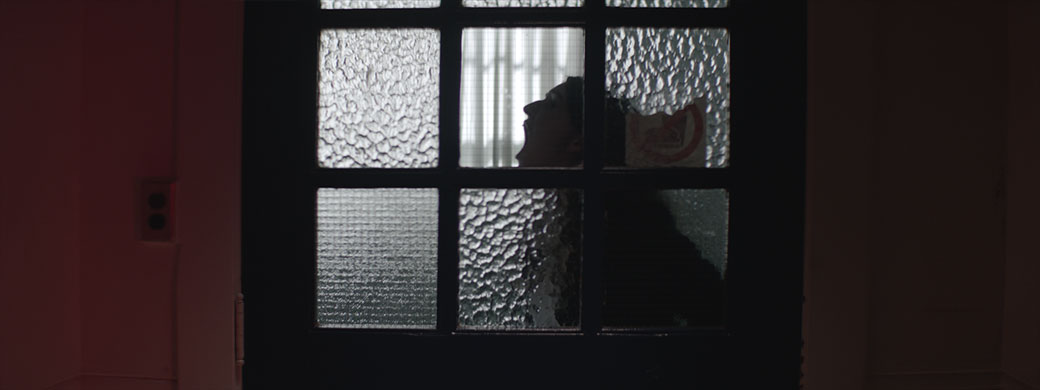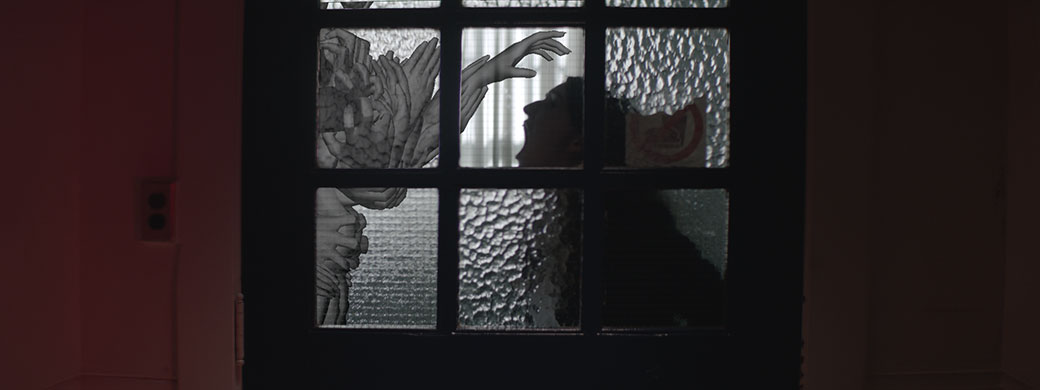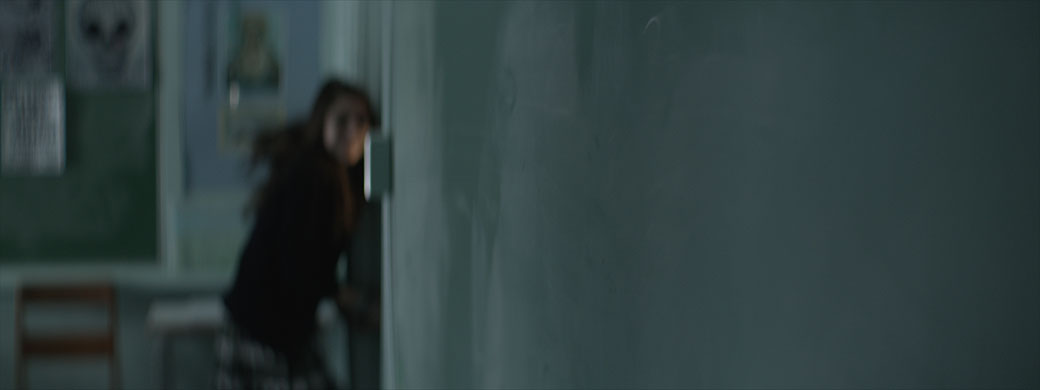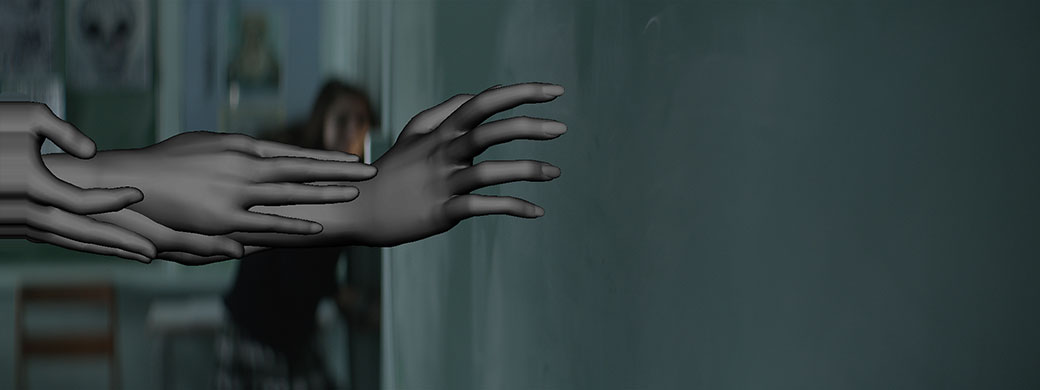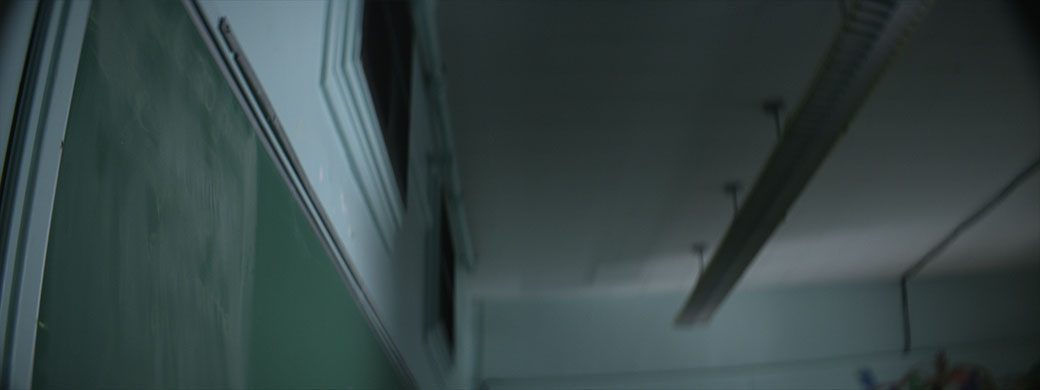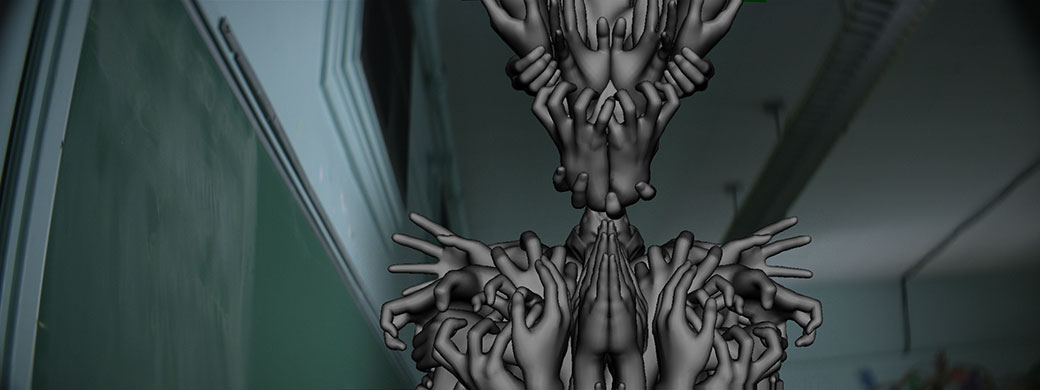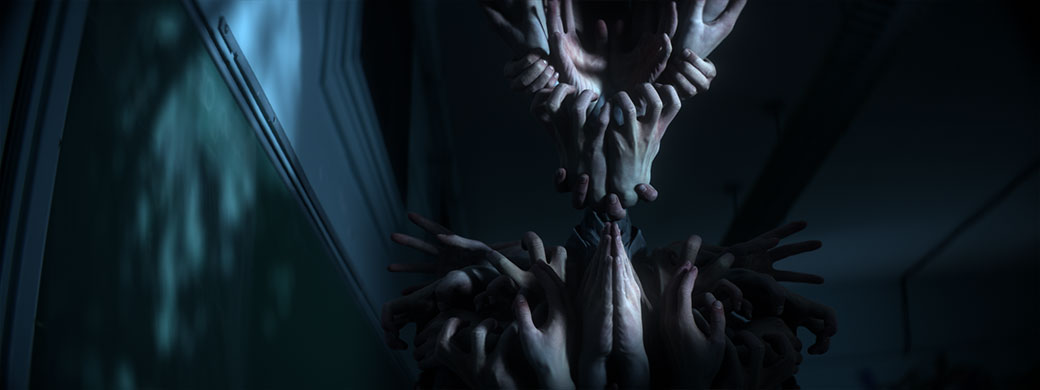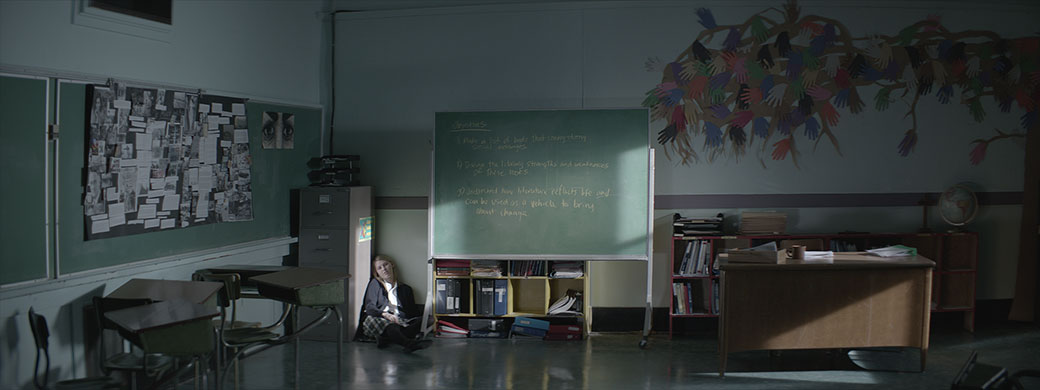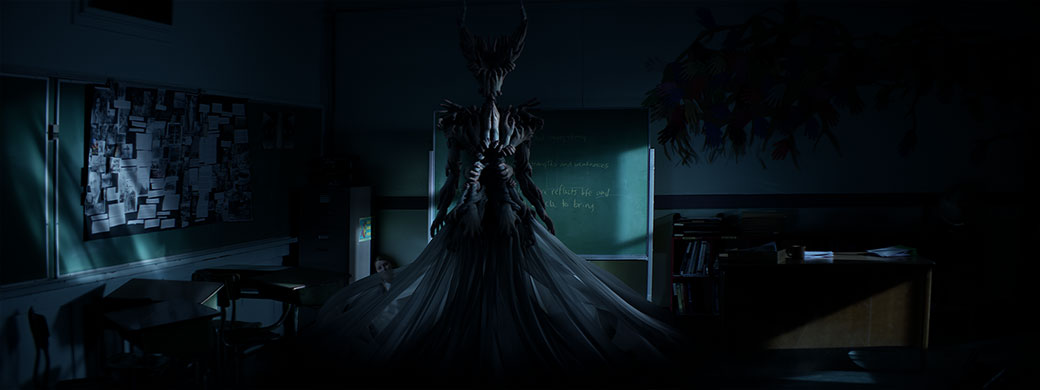Rue Case Study
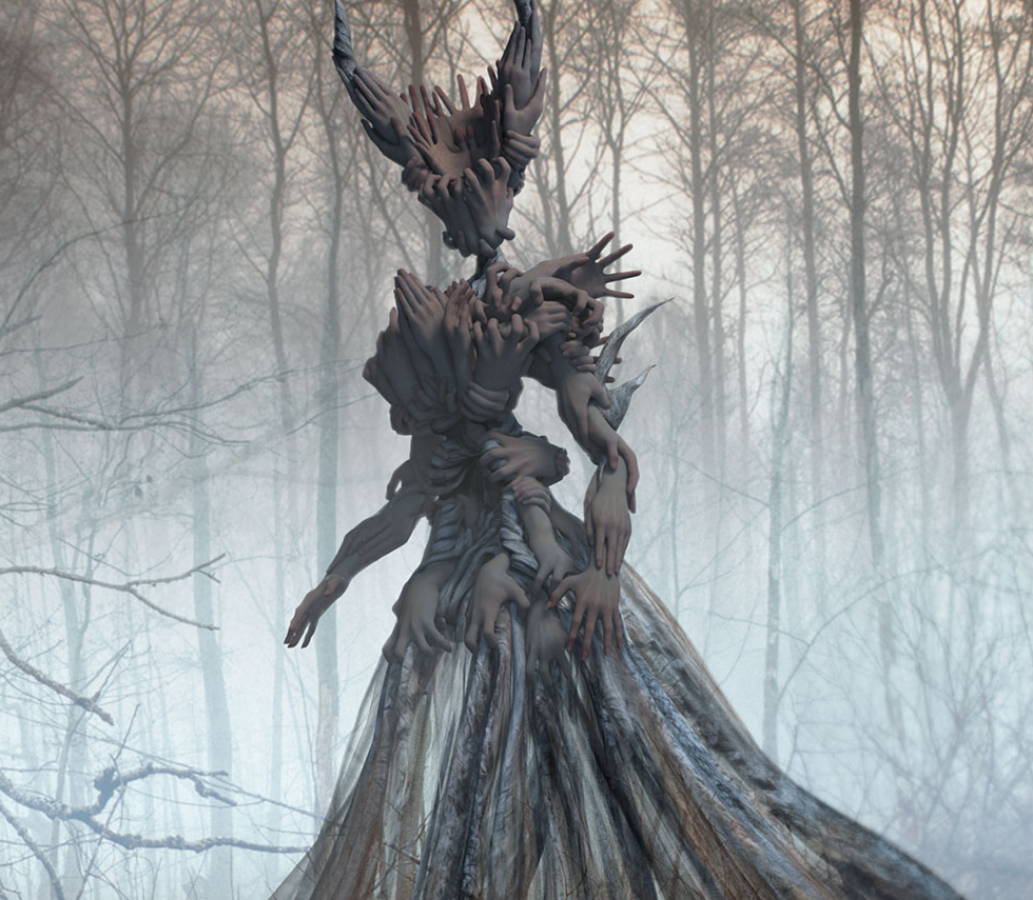
Case Study
Rue is an exciting new horror about a vengeful spirit conjured from the hands of slaughtered missionaries. Image Engine contributed to the short between feature film and television work, delivering the ghostly apparition via its Hollywood-grade creature pipeline.
Derek Franson’s indie horror Rue unfolds a slow-burn nightmare over the course of eight tense minutes. Two schoolgirls simmer in detention following an altercation, while one recounts the terrifying myth of the short’s title—Rue, a vengeful spirit comprised of the dismembered hands of slaughtered missionaries.
In true horror fashion, it’s not long before the spirit materializes, awoken by ill feelings and driven by violent desire.
The expertly crafted horror short stands as a precursor to a longer feature film that Franson currently has in development. This short is his pitch, revealing the tone and atmosphere that the final feature will present.
Image Engine was happy to play a part in bringing this concept to life. Employing its tried-and-tested approach to digital creatures normally reserved for major Hollywood blockbusters, it delivered the complex CG spirit across several shots, conveying the impact and fear requited of Franson’s vision.
Indie horror
Franson had previously delivered the scares in the horror flick, Comforting Skin, and Rue continues in a similar vein of eeriness. The director reverse-engineered the story after conceiving the wraith itself—a throng of disembodied hands contorted into near-human shape.
Franson turned to Image Engine to bring the spirit into the physical—or digital—realm.
“I’d heard of Image Engine’s amazing reputation, but I’d also heard sometimes when you start a VFX partnership the honeymoon period quickly ends…” says Franson. “However this relationship was the furthest from that—Image Engine was amazing to work with, and truly realized my vision for this piece.”
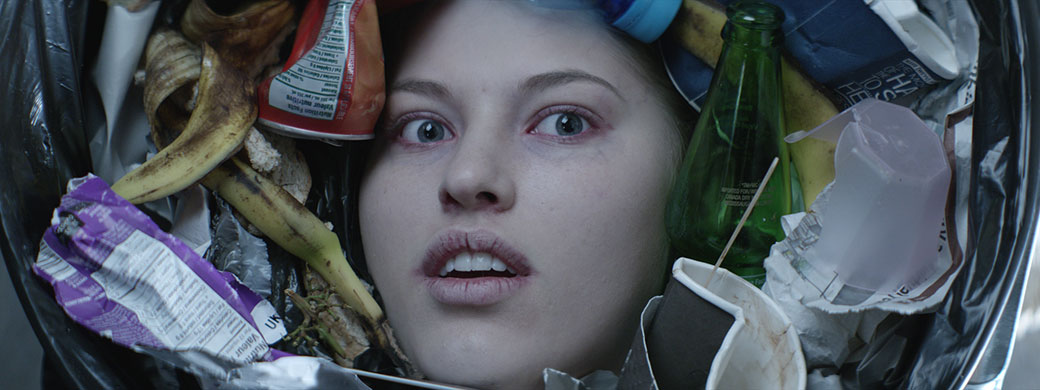

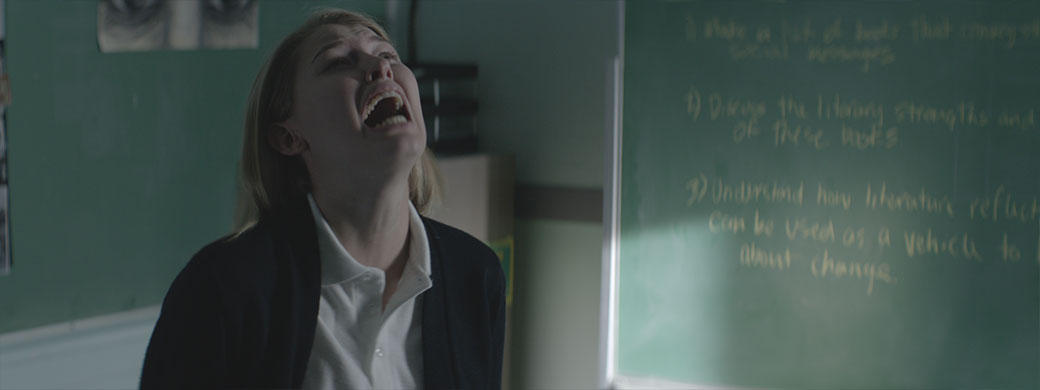
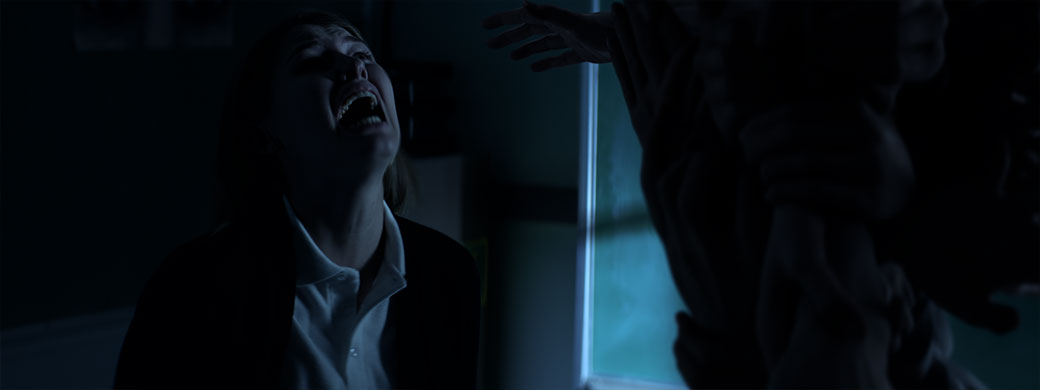
Visual effects supervisor Joao Sita jumped on board, bringing his wealth of feature film expertise to the smaller-scale project: “We could work on it almost as a test, generating ideas we could play with later in the main feature,” he says. “The nice thing about a small scope of work like this was that we worked in a super tight-knit environment. Lighting could push really far without having to wait for other departments, for instance. We could collaborate quickly, and move fast with creative ideas. It took six months from the day we said OK to the edit being locked with a really minimal crew.”
All hands on deck
The design of Rue spawned from Vancouver-based character designer, Kirsten Franson who collaborated with Vancouver-based cyberscanning studio, Industrial Pixel’s Ron Bedard to scan multiple hands so she could build the the complex model concept. Image Engine took the Z-Brush model and added to it. A major design element involved solving the movement of many hands via complex rigging techniques.
“Rigging is all about stringing the puppets for the animators to move—with Rue there were a crapload of strings!” reveals rigging supervisor Ramiro Gomez. “The ghost has three bones per finger and five fingers per hand. That’s 15 controls plus the wrist, times 26 hands: a significant amount of controls.”
To add to the complexity, one shot sees the creature scratch its fingers along a chalkboard: “Typically the fingers are forward kinematics (FK), but that shot required inverse kinematics (IK). We had to have a second set of controls for that one shot specifically, so that the spirit could drag its fingers without having to rotate each one individually.”
Rue’s moves
Franson wanted the wraith to move in a menacing way, but also with a subtle sense of grace. “I really like monsters, so as soon as I saw the design I said ‘I want to work on this!’” remembers Shaila Tobin, animator at Image Engine. “Derek described Rue as a ‘force of nature’. To envision this, we shot mocap of a flamenco dancer for each shot, then applied that data to Rue in Maya.”
“We started with a very simple blocking animation, so Derek would have an idea of how much volume and space the creature would take in every shot,” says Sita. “We could then start to define which aspects of the model we would need to develop, such as the hands, torso and legs.
“I like the idea that the creature doesn’t have legs, even though it presented an interesting creative challenge in making it move!” he continues. “It had to keep some of the motions you perceive in someone walking – we didn’t want it to feel too floaty or ghostly.”
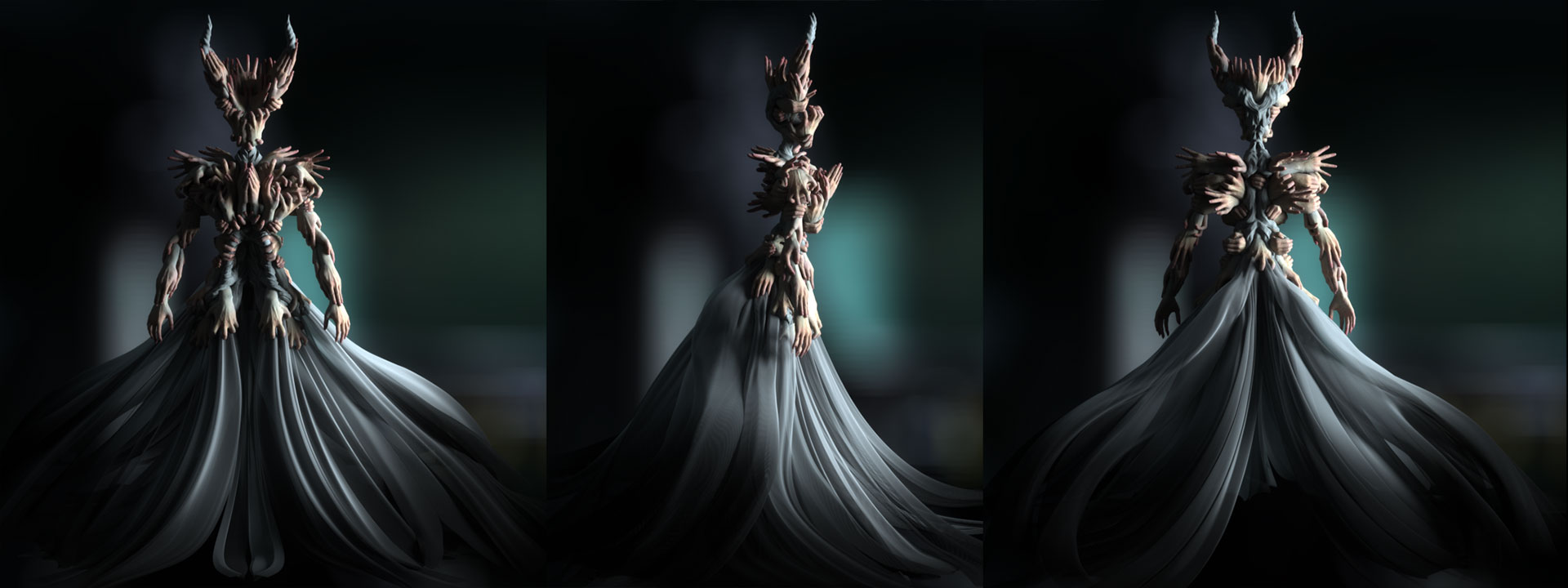
Image Engine tweaked the animation, resulting in a smooth, weightless movement that retained a sense of physicality. “It wasn’t too floaty, nor too human—that was what we were aiming for,” says Tobin.
The creature also wears a flowing skirt, which was simulated as per a typical cloth effects shot, but then further art directed for specific movements by the animation team. “The sim got us so far, but as we progressed with the shots, we thought it would have more impact if some of the skirt’s slices could move in a more intentional way. We went back to rig those for animation and animation made a cycle. It all happened really quickly thanks to the fast turnaround on this scale of show.”
Image Engine also added a pair of ‘praying hands’ to Rue’s chest, using mocap that was exaggerated for each shot. “We’d rotate those hands outwards when doing particular movements,” says Tobin.
For Franson, Image Engine completely “nailed” the shot: “There’s a threat to the creature, but there’s also a wicked subtlety to it. That’s a fine line to hit on—if you have too much of a movement it wouldn’t feel like Rue. Animation nailed it.”
A close collaboration
Image Engine devoted six months to Rue via a flexible schedule, during which artists would contribute to the project in between work on other shows.
For both Franson and Image Engine, the experience proved to be mutually beneficial, each learning from the other: “I’ve found a VFX company that is wonderfully insane—in a good way!” exclaims Franson. “VFX is all magic to me, but I know that what’s been done is very difficult, and I’m more than pleased at the outcome. I love the synergy that we have.”
For Sita, another quote from Franson sticks in the mind: “Derek called us ‘black belt wizards.’ I quite like that!”
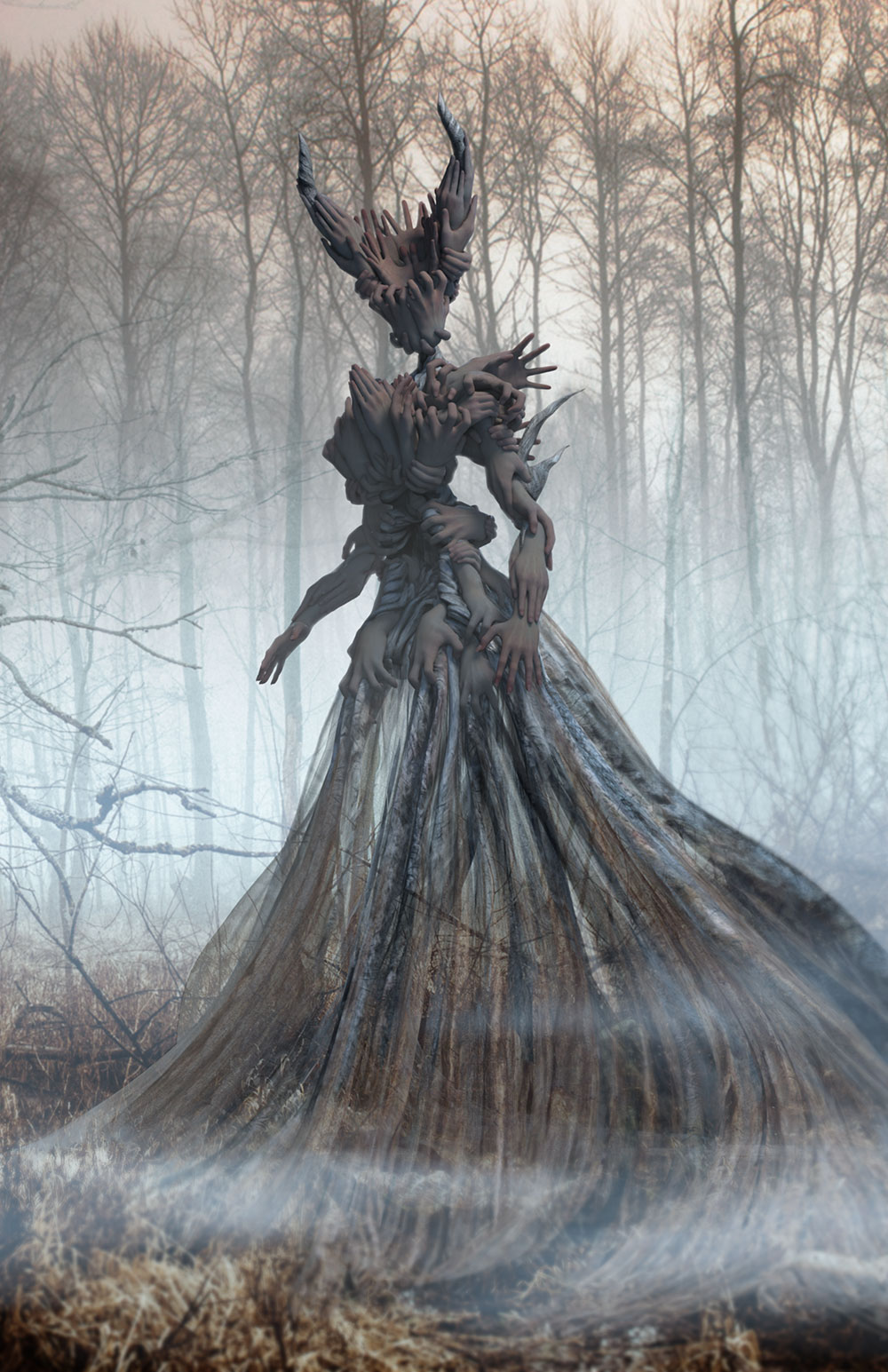
Rue concept illustrations by Kirsten Franson


